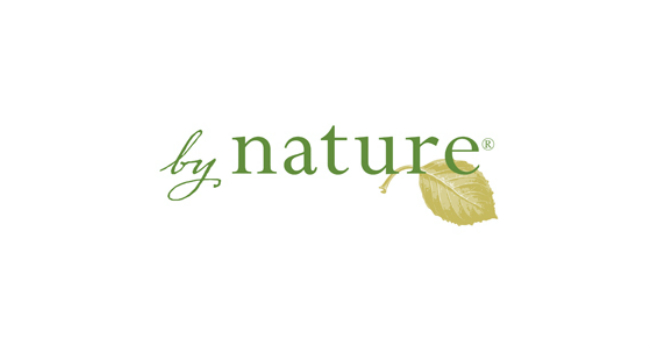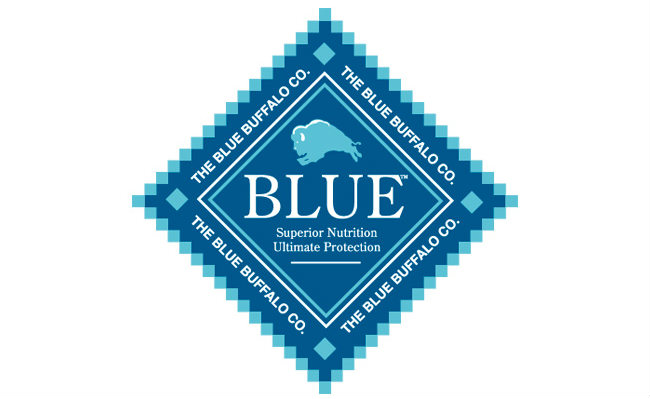Do you want the best for your feline friend? As a cat owner, it is natural to want the very best cat food for your cat. If you are willing to go the extra mile for your cat’s health, this review is for you. Organic cat formulas are becoming quite popular in the cat food industry. They are usually healthy and more nutritious that normal formulas, but do carry a bit of a price tag as well.
By Nature is one of the pet food manufacturing companies that offer a chain of organic cat food formulas. The By Nature Organic Chicken & Chicken Liver wet cat food formula is one of the organic formulas they produce. The company claims that this formula provides your cat with all its nutritional needs to keep it healthy and strong.
So, is this organic food really healthier than other cat foods, or is this just a marketing gimmick? Let’s analyze the ingredients and find out!
By Nature Organic Chicken & Chicken Liver
Organic Chicken, Organic Chicken Livers, Water, Organic Pea Flour, Organic Guar Gum, Dicalcium Phosphate, Organic Locust Bean Gum, Potassium Chloride, Salt, Taurine, Calcium Carbonate, Vitamin E Supplement, Choline Chloride, Zinc Proteinate (Chelated Source of Zinc), Manganese Proteinate (Chelated Source of Manganese), Copper Proteinate (Chelated Source of Copper), Sodium Selenite, Vitamin A Acetate, d-Calcium Pantothenate, Riboflavin Supplement, Vitamin B-12 Supplement, Ethylenediamine Dihydriodide, Biotin, Pyridoxine Hydrochloride, Thiamine Mononitrate, Vitamin D-3 Supplement, Menadione Dimethylpyrimidinol Bisulfite, Folic Acid.
Note that all ingredients in this formula have been blended under strict AAFCO organic pet formula requirements.
Top 5 Ingredients Analysis
When examining cat food, you should always pay the most attention to the top 5 ingredients in the food. The top 5 ingredients make up the vast majority of the nutritional content of cat food.
Organic Chicken
Chicken is a very popular ingredient for pet food and in this case, they are referring to whole chicken. This is a very high quality meat source and we are pleased to see it listed. In dry cat foods, whole chicken loses about 80% of its content during the cooking process. This is because chicken consists of about 80% moisture. After the cooking process is complete, the amount of whole chicken remaining is substantially reduced. However, in wet cat foods the cooking process is a bit different so this is much less of a concern.
Organic Chicken Liver
Here is another ingredient you probably wouldn’t want to see on your own dinner plate, but most cats seem to enjoy the taste of liver. Uncooked liver, or liver in very high quantities, can actually be toxic to cats. However, in this food, it is clearly provided well within safe limits. In fact, this ingredient is a pretty high quality ingredient overall. It provides a good source of vitamins, minerals, proteins, and other nutrients your cat can benefit from.
Water
As you might expect, water is mostly added for moisture and cooking purposes. It does not add any nutritional value to the food.
Organic Pea Flour
Peas are becoming more and more common in pet foods today, especially those listed as grain-free, holistic, or natural pet foods. While peas are certainly not grains, they serve much the same purpose. It mostly acts as a filler and a cheap way to increase the protein percentage of the food. However, cats receive almost no nutritional value from peas. Since cats are obligate carnivores, they require proteins from meat based ingredients. There is very little research that has been performed on the long term effects of cats consuming peas. We do know that peas can cause runny poop or digestion issues in dogs, but the full effect on cats remains a bit of an unknown. Since the peas in this case are added as a flour, the ingredient is probably added to help with the consistency of the food and the cooking process.
Organic Guar Gum
This ingredient is also sometimes called guaran. It is primarily the ground endosperm of guar beans. The guar seeds are dehusked, milled and screened to obtain the guar gum. It is typically produced as a free-flowing, off-white powder. This ingredient is mostly used to thicken the food and give it more texture. It is an FDA-approved, all natural GRAS (Generally Recognized as Safe) ingredient used by the food and cosmetic industries. It also is used to improve the shelf life of the food and helps lower the glycemic index of food. Many cat food companies claim this ingredient also aids in digestion and weight loss. There is some minor debate about the benefits of this ingredient with some claiming negative impacts, but in general, this is thought to be a relatively non-nutritious yet safe ingredient.
Additional Ingredients Of Interest In By Nature Organic Chicken & Liver Cat Food
Dicalcium Phosphate
Dicalcium phosphate (DCP) is a dibasic calcium phosphate formed by a reactive combination of calcium oxide and phosphoric acid. As a dietary supplement, it is commonly used as a source of calcium and phosphorus for both humans and animals. This ingredient is also frequently used as a firming agent and binder to help give the food more structure. While not an especially nutritious ingredient, the risk of adverse health effects due to cats consuming this ingredient appears to be very low.
Potassium Chloride
This chemical compound sometimes goes by the name “trace minerals.” It is a “metal halide salt” composed of potassium and chlorine. It is used in medicine, scientific applications, and food processing. Since potassium is an important nutrient for cats, this is a good way to supply it. It is also commonly used as a replacement for salt and to balance the pH level of the food to meet various requirements. Not only is it used in cat food, it is frequently used in human foods and medications as well. There is some evidence to suggest small intestinal ulcers may occur in cats after prolonged exposure to this ingredient, but this has yet to be proven or disproven.
Vitamin E Supplement
Vitamin E is a powerful antioxidant that scavenges the body’s free radicals. Free radicals are thought to contribute to aging and contribute to a number of health problems. That’s why vitamin E is an important tool in the battle against aging, heart disease and cancer. When a cat food does not naturally contain sufficient levels of vitamin E, the manufacture will add in additional vitamin E as a supplement. It is crucial for cats to receive an adequate amount of vitamin E so this supplement is pretty commonly found in cat food products.
Allergy Risks Associated With By Nature Organic Chicken & Liver Cat Food
The By Nature Organic Chicken & Chicken Liver wet cat food contains no soy, wheat, or corn. This is excellent news because those are the main allergy causing ingredients commonly found in cat food. Some cats may have some issues digesting the pea flour in this food, but that should only occur in a small number of cats. Overall, we believe the allergy risk with this food is pretty low.
Poor Quality Ingredients Commonly Found In Cat Food
Gluten – This ingredient is associated with causing allergies in cats. It is also known to raise sugar levels in cats. Over time, this can lead to diabetes. Gluten refers to the proteins found in wheat endosperm which is a type of tissue produced in seeds that’s ground to make flour. Many pet food manufactures will use this ingredient to help boost the protein percentage of the food.
Soy – Soy is another common food allergen for cats and is also known to cause gastric upset. This ingredient is considered a very low priced filler ingredient. While it will certainly help make your cat food more full, the full nutritional benefit in this ingredient is questionable at best. Many cat food brands will tell you the allergy risk is very low with soy, but it is one of the most well known food allergens that cats deal with in commercial pet food. Overall, this is a pretty low quality ingredient.
Artificial coloring and flavoring – Both artificial and natural flavor ingredients are considered to be lower quality ingredients. Artificial flavor is usually derived from petroleum. Most have not been studied for safety or toxicity. They are all synthesized chemicals that don’t even have common names. Most artificial flavors actually contain many chemical ingredients, not just one. Many of those chemicals are volatile. Both natural and artificial flavors are chemical based ingredients and we don’t get all that excited when we see either one of those ingredients listed. Both of these ingredients have potential allergy risks and other possible health problems in cats.
We also find it quite irresponsible to include artificial coloring in pet food since the health concerns about these added colors are so controversial. Your cat does not care what color their food is and the only reason artificial coloring is added to this product is for marketing purposes. It makes the food look better to you YOU, the human consumer. Of course, many cat food brands are very defensive about their use of food coloring. Here is an example of how the Purina brand defends their use of fool coloring. Notice how even in their explanation, there is no perceived benefit to these ingredients other than changing the color. There is also a growing amount of evidence to suggest food coloring may be linked to cancer in not just dogs and cats, but also humans. Here is an article that explains a bit further. In short, since there is some controversy surrounding this ingredient, we find it a bit strange that cat food companies would spend money adding this ingredient into a product when at best, it has zero nutritional value for your cat and only has marketing value. At worse, it could pose health risks. It just doesn’t seem like the risk of including this ingredient is worth it.
Fortunately, none of these harmful ingredients are included in the By Nature Organic Chicken & Chicken Liver Cat Food formula.
Conclusion
The By Nature organic chicken & chicken liver wet cat formula is a well balanced cat food formula with a great list of ingredients. It will be especially attractive to cat owners who want their cats food to come from organic sources. While organic food is not 100% safe, in general, they are considered a much healthier option. Unfortunately, the price reflects the higher quality ingredients and this food may be out of the price range of many cat owners. Judging by the ingredients alone, we believe this is an above average cat food.




